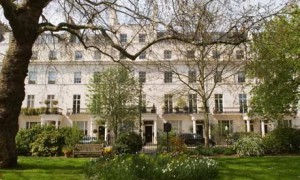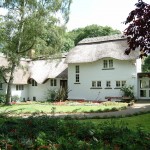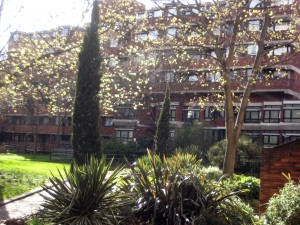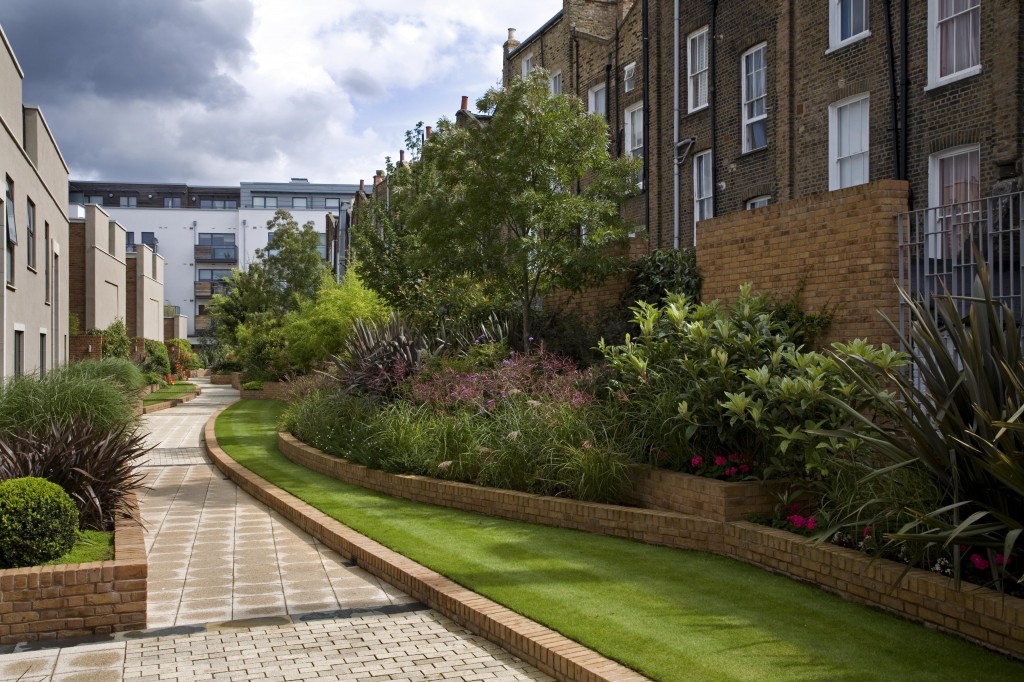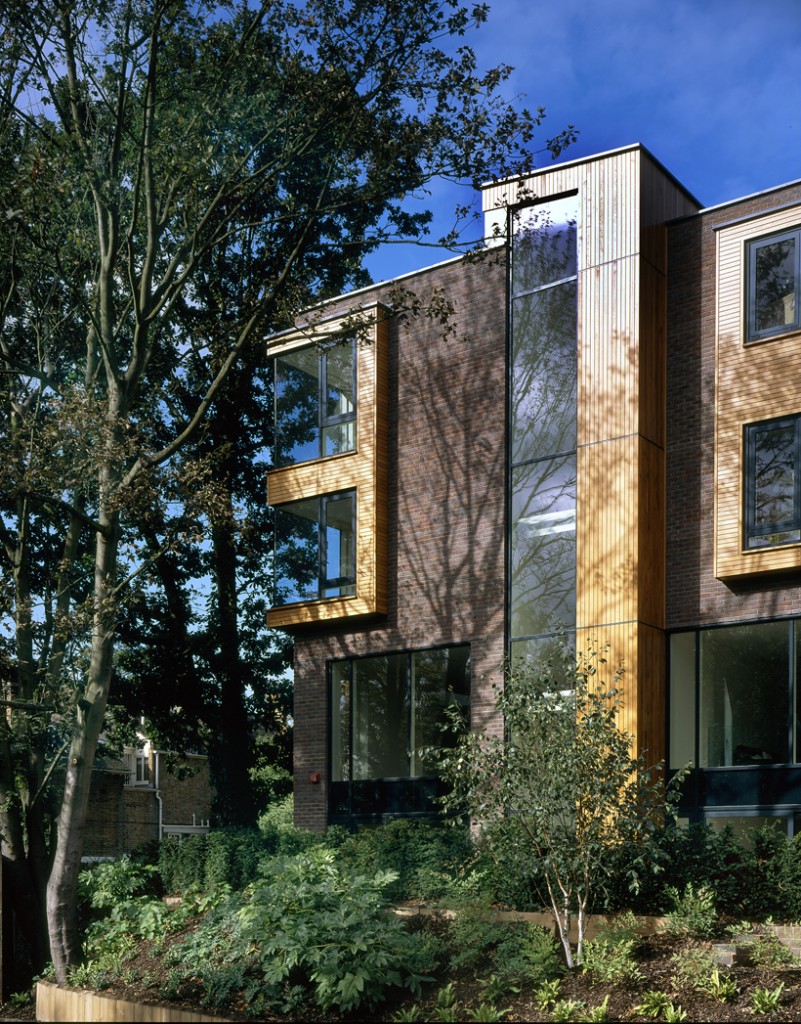I recently went to see ‘Worlds End’, the final part of Edgar Wright’s ‘Cornetto Trilogy’. For those who don’t know it, the film is a science fiction comedy, the third in a short series of action films starring Nick Frost and Simon Pegg. I saw it in Letchworth, in the Broadway cinema. Why is this relevant? Well, Letchworth forms the backdrop to most of the movie; it was filmed there and indeed the Broadway Cinema was one of the locations in the film (‘The Mermaid’).
The first Garden City has long been held up as the apex of good urban planning, including by the current government, so it was interesting to see it used a somewhat sarcastic comment on Britain today. As Peter Bradshaw put it in his review of the film for the Guardian: “It is different from the locations that usually show up in movies: London or the leafy countryside. This is New Town Britain, Visitor Centre Britain, the suburban commuterlands and hinterlands: bland and agreeable.” The film is multi-layered, but one of the underlying themes is that living in the suburbs turns you into a robot. Hardly a new message, but ironic that they chose to illustrate this by using the crucible of the garden city movement, whose principle aim was to counter the way that industrialisation had de-humanised people.
Regular readers of this blog may remember my post from last year – “Where have all the trees gone?” (https://www.bowleswyer.co.uk/?p=132). In this, I began to explore why many developers don’t really plant trees and how this might be addressed. I followed it up with a lecture at a conference in Devon (staged by the excellent Barcham Trees) in which I postulated that the garden city movement was indeed a turning point in modern planning, but it was also where it all started to go wrong. I pondered on what it was that made particular housing estates ‘successful’. For the moment, let’s ignore esoteric or academic definitions of success and instead look at market or colloquial definitions. The most expensive, the most sought after areas of housing are dominated by something larger than the houses – trees. And not just any trees; large, mature, forest species – horse chestnuts, oaks, planes trees, limes, even sycamores. So clearly, green leafy suburbs are what we aspire to. In fact estate agents and the media frequently use the word ‘leafy’ as a synonym for affluent when they are talking about neighbourhoods.
If we trace the roots of housing development back 100 years or so ago, we come to the genesis of large scale housing development the garden city movement. Before that, during the Victorian era, most development had been urban. At both ends of the social scale, mass housing as a concept had really only come into being at the beginning of the C19th, with developments such as Bath and the Nash terraces in London for the wealthy and mass terraced housing for the working class. But the rise of a middle class in late 19th century England meant that a different demand started to emerge. The landed gentry wanted their town houses to be elegant and urban – gardens were not a part of that. The working classes could only afford back to backs. Whilst the middle classes could pay more for housing, they could only afford one house. What they hankered after was mini version of the country estate. Both the architecture and the gardens point towards this – half-timbered houses evoking an idealised view of Elizabethan country houses; lawns, which had previously only been the reserve of the very wealthy, became available to all with the invention of the lawnmower in the C19th.
The garden city movement pulled many of these threads together. It distilled elements from the arts and crafts movement (with which it was closely allied), social reform (particularly of the Quakers), town planning, and mixed all this with a heady dose of social idealism with which all great reform movements are imbued. For me this is
where it all started to go wrong. The fork in the road where it all seemed so nice led us after sixty years ago from Letchworth – pleasant enough, to some of the more horrible modern housing estates. One of the reasons that the Garden City idea was so popular was that it plugged into the
English Dream. But continual watering down of that dream has made it into something of a nightmare.
In city centres, one clear way forward is to go back to a landscape-dominated high density development model. There have always been versions of this around – look at Darbourne and Darke’s Lillington Street for example (a social housing project for Westminster City Council c1961-62, and a beacon in early 60s architecture-landscape partnership), or Janet Jack’s landscape around the Alexandra Road development in Camden – one of the last great social housing schemes. I would argue that both these developments are relevant today, although Alexandra Road has suffered from poor maintenance. I first went to Lillington Street in 1977 – it was one of the things that caused me to choose to train as a landscape architect. I revisited the scheme more recently and it has fared
very well. It feels as fresh and relevant now as when it was first designed 50 years ago, although the trees are bigger! There is no vandalism, and although people do have small areas of defensible space, the overall quality of and scale of the landscaped spaces is such that the estate is really leafy (there it is again!) despite being very high density. The overall feel is (not by accident I am sure) similar to traditional London squares. These principles are applicable to smaller scale developments.
We have tried to use similar principles ourselves in design of dense urban housing developments. Admittedly, these were privately funded; I suspect that the days of well-funded grand (or even modest) social housing are over, at least for the moment.
Both the Collection and Tercelet Terrace developments adopt this approach of public landscape at the expense of private space. Actually, in both projects the cost of the landscape was a very small percentage of the total.
What this shows is that the truth here is somewhat counter-intuitive: that in urban development at least, up to a point, higher density is actually a pre-requisite of good landscape and greater biodiversity, rather than acting as a restriction, as one might expect. It creates the opportunities for more meaningful spaces and often provides the funding to address those opportunities. The counter to this is that suburban development does not create good quality spaces, particularly at the densities mostly being built in recent years. Perhaps the government should apply more joined up thinking in this respect.
Rural development is another story – another post on that coming soon (or perhaps another movie?)


